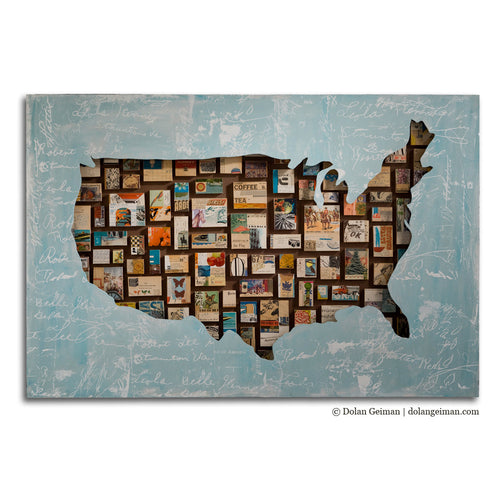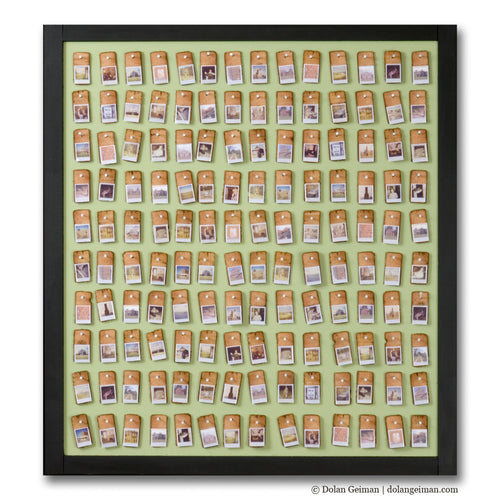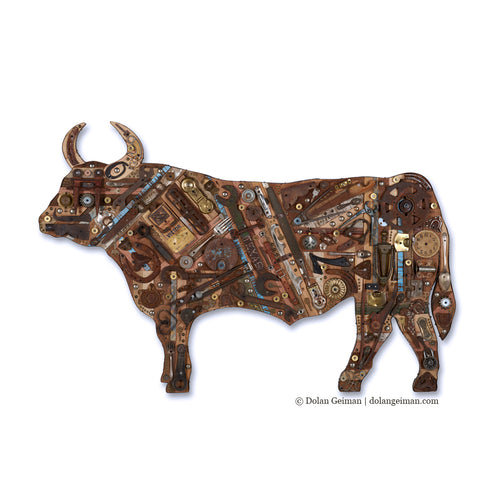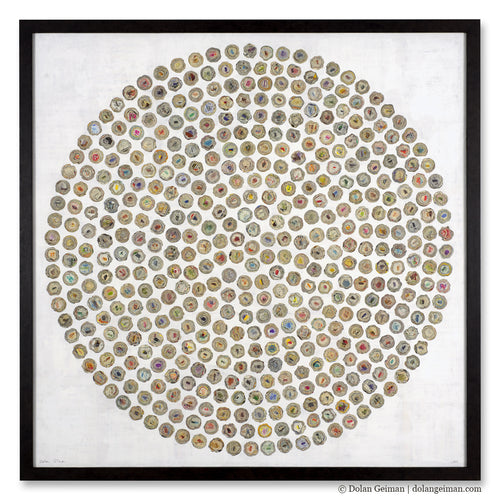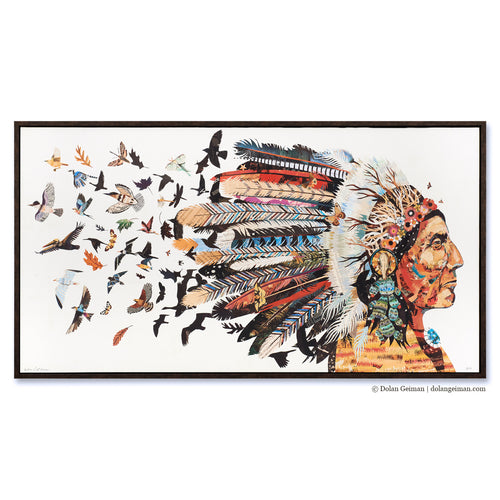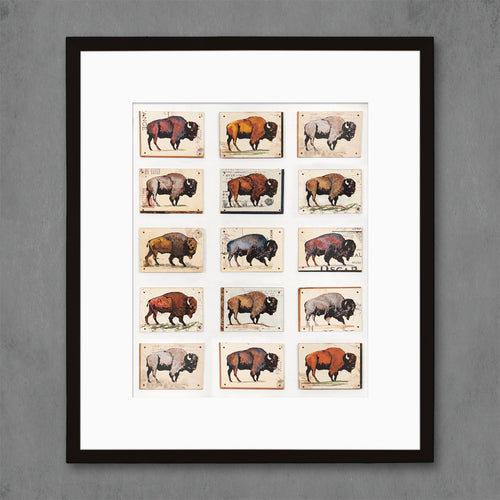Story
At night I’m apt to be in a stampede, and you can't read Milton in a stampede… - Lonesome Dove
Some of the earliest cattle drives were in the 1850's, when the gold rush spurred cattlemen to send their large herds to the west coast for the abundance of big money. However the largest and most well-known drives took place after the civil war, from the late 1860's until the 1880's, when railways and barbed wire put an end to the open range. A typical cattle drive might have around 2,500 head of cattle, which were being managed by about a dozen men: the drovers, who kept the cows in line, the wranglers, who were in charge of the second-string horses for when the drovers mounts needed a rest, and watching over the whole bunch was the trail boss. The cook was usually the second most important man in the outfit, and carried in his chuckwagon everything from food to medicinal cures to bedrolls. Out on the trail, stampedes were not un-common and were usually caused by loud noises such as lightning. These were dangerous situations, but could be handled by experienced drovers. The idea was to turn the lead cattle to the right and form a circle with the herd. Once the entire herd was circling, they would begin to slow down.
This piece of art was created using 195 old book covers which have been hand painted and screen printed with an iconic cattle motif. These book covers were collected from abandoned houses and schools, as well as from books discarded by libraries throughout the country. The connection for me is direct: like the cattle drives of the 1800's that died when the railroads approached, will books eventually be swept away by the onrushing tide of technology, remaining only as souvenirs of a more romantic era?
Story of Stampede, Dolan Geiman 2011
